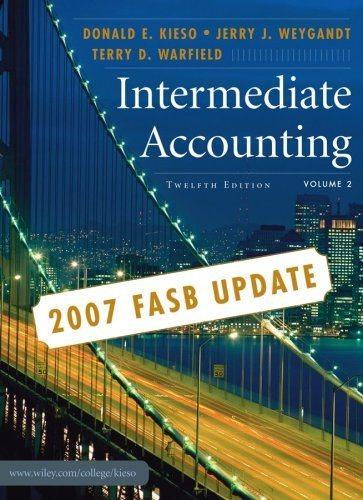Question
Consider a manufacturer that makes a certain product. Variable manufacturing overhead and fixed manufacturing overhead are allocated to each unit made based on budgeted direct
Consider a manufacturer that makes a certain product. Variable manufacturing overhead and fixed manufacturing overhead are allocated to each unit made based on budgeted direct labour-hours. The following are the production data. (There were no beginning or ending inventories.)
| Budgeted variable overhead rate per DLH | $ | 8 | |
| Budgeted DLHs per unit | 2 | ||
| Data for May are as follows: | |||
| Budgeted production volume | 1,050 | units | |
| Actual direct labour-hours | 2,600 | DLHs | |
| Actual variable overhead costs | $ | 19,500 | |
| Actual production volume | 1,200 | units | |
| Budgeted fixed overhead costs | $ | 29,400 | |
| Actual fixed overhead costs | $ | 31,500 | |
Required:
1-a. Calculate the direct labour-hours management will have expected to incur in light of the production volume achieved.
1-b. Which amount is relevant for determining labour efficiency variance?
2. Calculate all the variable overhead variances. (Indicate the effect of each variance by selecting "F" for favourable, "U" for unfavourable, and "None" for no effect (i.e., zero variance).)
3. Calculate all the fixed overhead variances. (Indicate the effect of each variance by selecting "F" for favourable, "U" for unfavourable, and "None" for no effect (i.e., zero variance).)
PART 2:
Huron Company produces a commercial cleaning compound known as Zoom. The direct materials and direct labour standards for one unit of Zoom follow:
| Standard Quantity or Hours | Standard Price or Rate | Standard Cost | ||||||||
| Direct materials | 4.30 | kilograms | $ | 2.00 | per kilogram | $ | 8.60 | |||
| Direct labour | 0.60 | hour | $ | 10.00 | per hour | 6.00 | ||||
| Variable overhead | 0.60 | hour | $ | 1.80 | per hour | 1.08 | ||||
The budgeted fixed overhead cost is $14,222 per month. The denominator activity level of the allocation base is 800 direct labour-hours.
During the most recent month, the following activity was recorded:
10,100 kilograms of material were purchased at a cost of $2.21 per kilogram.
A total of 840 hours of direct labour time was recorded at a total labour cost of $9,310.
The variable overhead cost was $1,540, and the fixed overhead cost was $14,306.
Assume that the company produced 1,200 units, using 6,600 kilograms of material in the production process. (The rest of the material purchased remained in inventory.)
Required:
1. Compute the direct materials price and quantity variances for the month. (Indicate the effect of each variance by selecting "F" for favourable, "U" for unfavourable, and "None" for no effect (i.e., zero variance).)
Step by Step Solution
There are 3 Steps involved in it
Step: 1

Get Instant Access to Expert-Tailored Solutions
See step-by-step solutions with expert insights and AI powered tools for academic success
Step: 2

Step: 3

Ace Your Homework with AI
Get the answers you need in no time with our AI-driven, step-by-step assistance
Get Started


